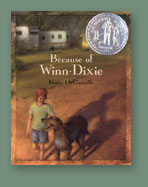One of the things I love about school visits is that I get to go to classrooms all over the country and meet wonderful students and teachers. There are some comforting universals to a grade school classroom: a certain amount of clutter, a map, the alphabet along the wall. And then there are delightful surprises: a pet iguana, a stunning view of the wilderness, a reading loft, a tank of salmon fry to be released in a local stream, a flag flown by a student’s father over his army camp in Afghanistan. It’s a window into the thoughts and values of the community I’m visiting.
I recently visited a second grade classroom where I saw two student made posters on the wall. The first was titled Writer’s Tools in the Hand. Underneath was an illustrated list: paper, pencil, eraser, dictionary, word list, and illustration tools. It was a good reminder to take a moment before I begin my writing session of the day to have all the tools I need at hand. I especially liked the word list idea. I know many teachers help their students brainstorm a list of likely words before they start a writing assignment. Though I don’t need that technique, I have used a variation of it. Every writer has word habits, words or phrases that pop up more often than they should. I have about a half dozen that I lean on more than I should, so I make a word list of them and post it over my workspace to remind me to make stronger word choices and not lean over much on the familiar.
It was the second poster that really struck me though. It was titled: Writers’ Tools in the Head and Heart. The list included: thinking, good ideas, awareness, fun attitude, information, concentration, quiet or silence.
There are so many things to love about that list, and perhaps most importantly that writing well engages both the head and the heart. I love it that thinking comes before good ideas, an excellent reminder. Sometimes I have to think about a scene for days, even months, before I have a good idea about how to fix it.
Awareness is a tricky idea, I asked a group of the 2nd graders who had made the poster what they thought awareness meant. They said that it meant you should pay attention to all your ideas about a story not just the shiny, easy ideas that were in the last story you read. Excellent advice!
Fun attitude might just be the best advice of all though. If my writing isn’t going well, it’s almost always because I’ve lost the joy of it. Loss of joy may not be the cause of bad writing, but it is at least the reliable companion of bad writing. And when I change to a more positive and playful outlook, the writing reliably improves.
Information and concentration are ideas I’ve been learning to use as a pair. I love research so much, I could spend all my time chasing the next dazzling fact and completely lose track of my story in my zeal to fill it up with the amazing details I’ve learned. But sometimes what I need is not more information but concentration on the research I’ve already done.
Finally I love it that quiet and silence are not the same thing. Sometimes I need absolute silence for a particular task. Reminding myself to turn off the music for the duration of the task helps. Other times I just need the quiet of my brain focusing on just one thing, not email, not social networks, not housework or snacks but simply the quiet of letting myself be a writer and nothing else for a few hours–a true gift!
So how about you? Do you have a favorite tool of the hand, head, or heart? I’d love to hear about them in the comments.













